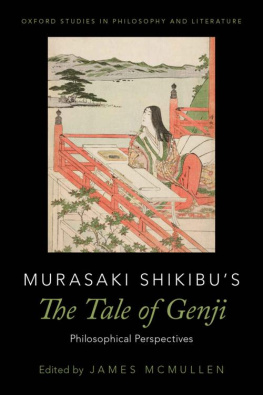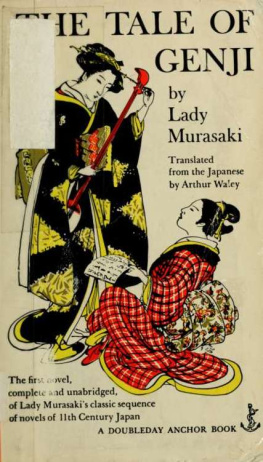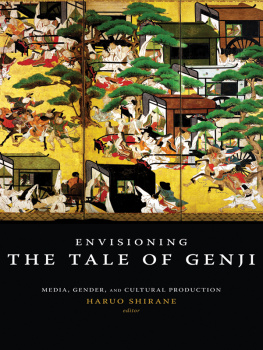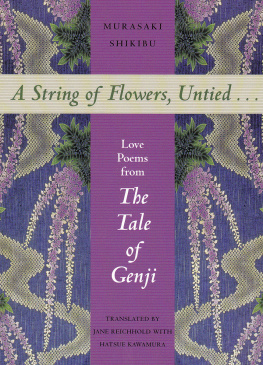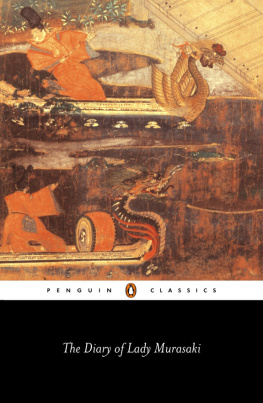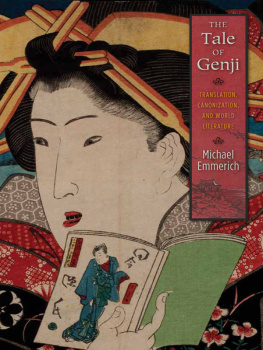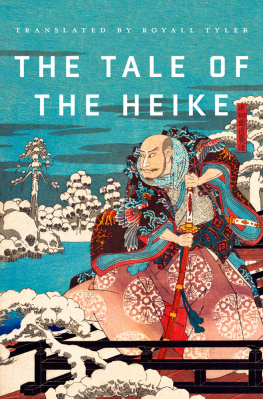Contents
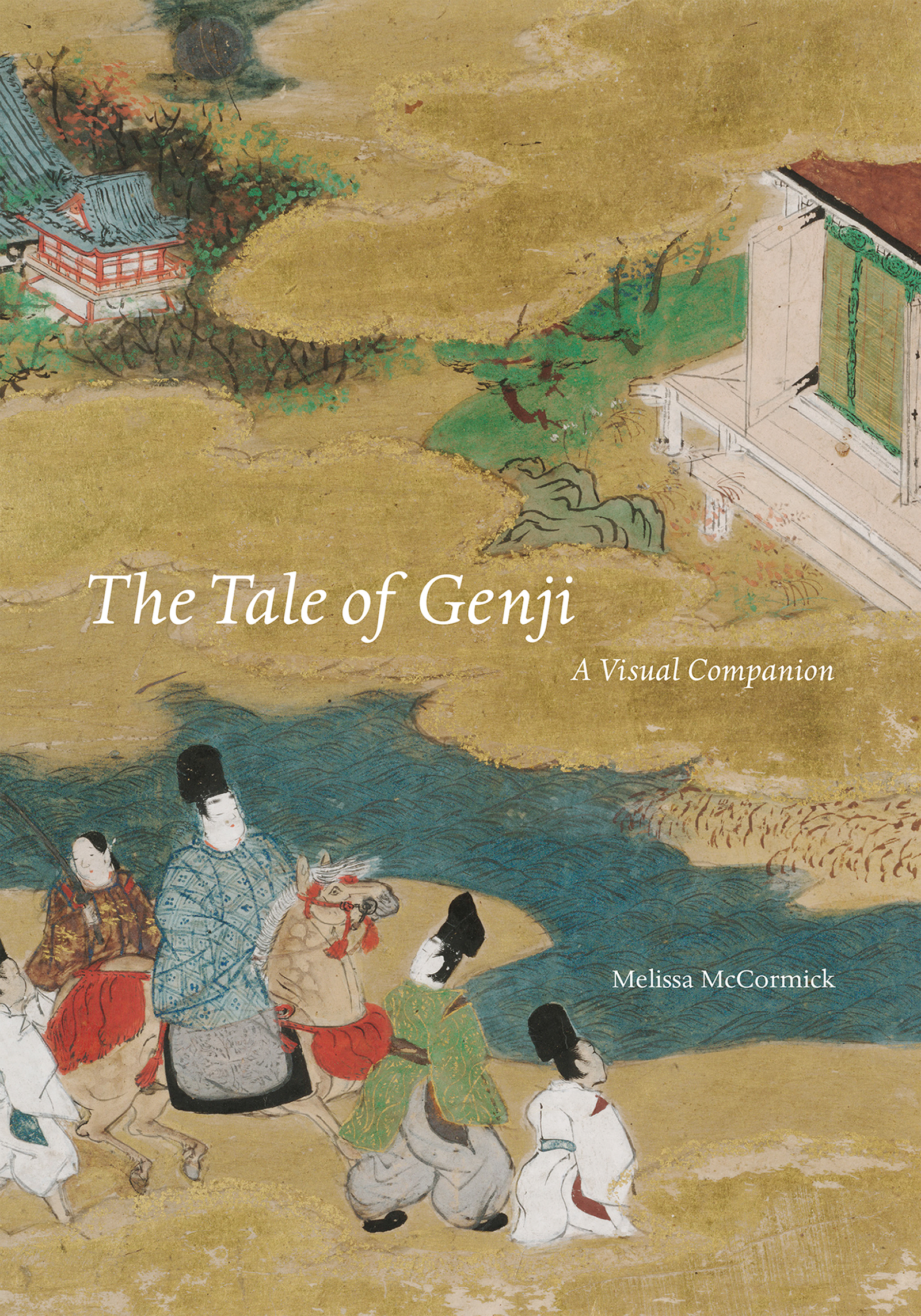
The Tale of Genji
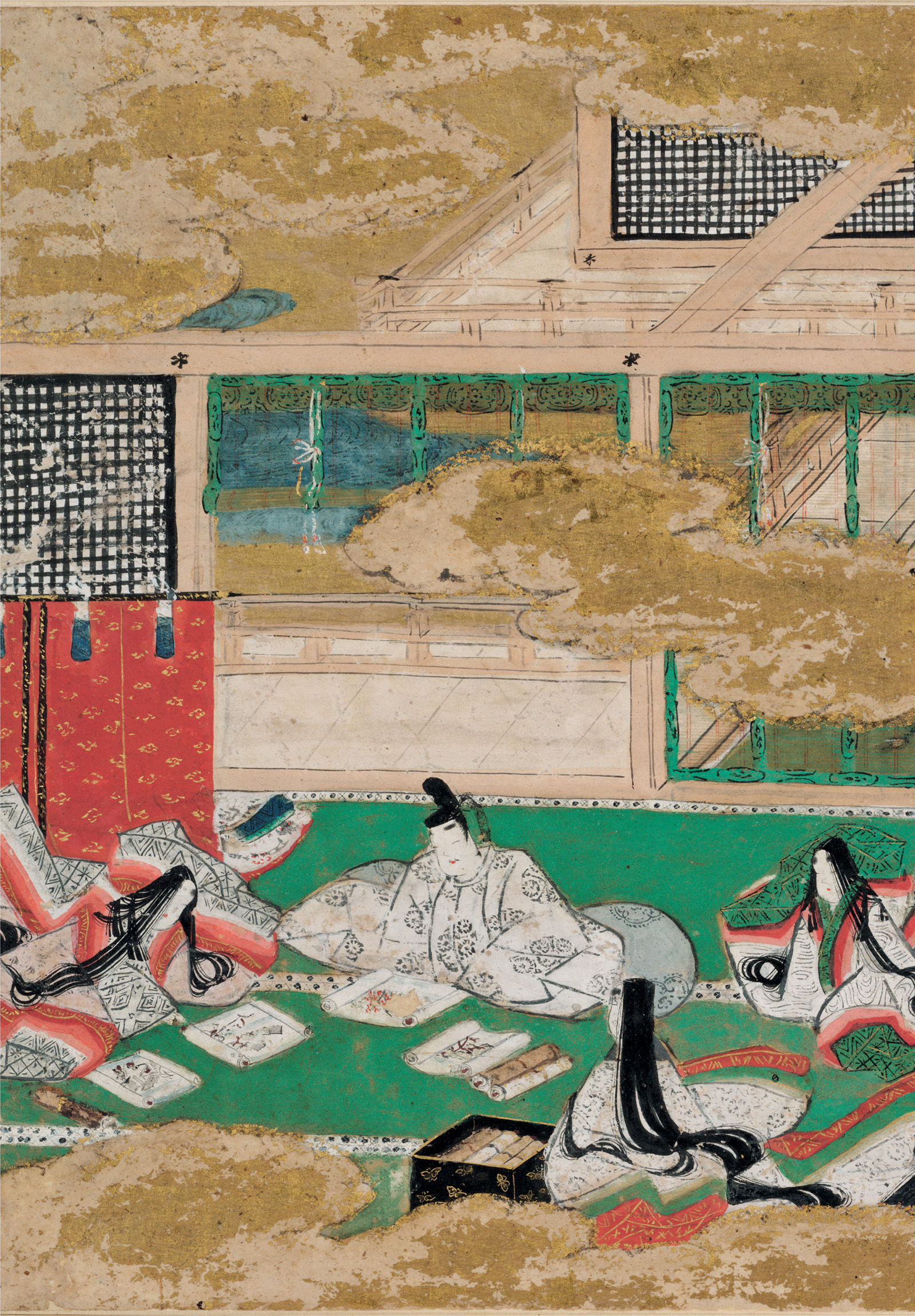
The Tale of Genji
A Visual Companion
Melissa McCormick
Princeton University Press
Princeton and Oxford
Copyright 2018 by Princeton University Press
Published by Princeton University Press, 41 William Street, Princeton,
New Jersey 08540
In the United Kingdom: Princeton University Press, 6 Oxford Street,
Woodstock, Oxfordshire OX20 1TR
press.princeton.edu
Front matter illustrations: p. ii, detail of image on p. 88; p. vi, detail of image on p. 232; p. viii, detail of image on p. 68; p. x, detail of image on p. 160
Jacket illustration: (front) Tosa Mitsunobu, The Lady at Akashi () from The Tale of Genji Album, 1510. Imaging Department
President and Fellows of Harvard College.
Tale of Genji, translated by Dennis Washburn. Copyright 2015 by
Dennis Washburn. Used by permission of W.W. Norton & Company, Inc.
Poems from A Waka Anthology, Volume Two: Grasses of Remembrance, Part B, by Edwin A. Cranston. Copyright 2006 by the Board of Trustees of the Leland Stanford Jr. University. All rights reserved. Used by permission of the publisher, Stanford University Press, sup.org.
All Rights Reserved
Library of Congress Cataloging-in-Publication Data
Names: McCormick, Melissa, 1967
Title: The Tale of Genji : a visual companion / Melissa McCormick.
Description: Princeton : Princeton University Press, 2018. |
Includes bibliographical references and index.
Identifiers: LCCN 2017061368 | ISBN 9780691172682 (hardback : alk. paper) | eISBN 9780691188751 (ebook)
Subjects: LCSH: Murasaki Shikibu, 978? Genji monogatariIllustrations. |
Genji album Illustrations. | Painting, Japanese Themes, motives. |
Tosa, Mitsunobu, 1434?1525. | Arts and society Japan History. |
Japanese literature Heian period, 7941185 History and criticism.
Classification: LCC ND1059.T6585 T35 2018 | DDC 895.63/14
dc23 LC record available at https://lccn.loc.gov/2017061368
British Library Cataloging-in-Publication Data is available
Designed by Yve Ludwig
This book has been composed in Dante Pro and Kozuka Mincho Pro
Printed on acid-free paper.
Printed in China
10 9 8 7 6 5 4 3 2 1
Contents
vii
ix
Acknowledgments

Over the years, the students in my seminars and lectures on The Tale of Genji, through their questions, insights, skepticism, and wonder over the tale, have been a constant source of inspiration, and this book was written with them always in mind. The ability to teach with the Genji Album and to examine it up close on multiple occasions has enriched this project beyond measure. For that, I am indebted to the late Philip Hofer, who bequeathed his collection to the Harvard Art Museums, and to the institution today for making it so accessible. I express my sincere thanks to Rachel Saunders, Abby Aldrich Rockefeller Associate Curator of Asian Art, and to Mary Lister, Manager of the Art Study Center at the Harvard Art Museums, for accommodating numerous requests and for their dedication to the pedagogical mission of the museum. Likewise, the ability to view the album alongside visiting colleagues, in particular, Takagishi Akira, Ido Misato, Kamei Wakana, and Ikeda Shinobu, deepened my understanding of the work, and I thank them for their insights and intellectual generosity. Conversations with Genji scholars also helped shaped this book, with special thanks going to Estelle Bauer, Edwin Cranston, Ii Haruki, Edward Kamens, Kasashima Tadayuki, Kawazoe Fusae, Kojima Naoko, Yukio Lippit, Julia Meech, Mitamura Masako, Sano Midori, Edith Sarra, Haruo Shirane, Royal Tyler, J. Keith Vincent, Dennis Washburn, Watanabe Masako, and especially the late H. Richard Okada and the late Chino Kaori. For their direct engagement with the manuscript I am grateful to Fumiko Cranston, Gustav Heldt, It Tetsuya, Kimura Atsuko, Andrew Watsky, and to Christopher Jury, for his meticulous editing. The collections at the Harvard-Yenching Library and the Fine Arts Library at Harvard University, and their respective librarians, Kuniko Yamada McVey and Nanni Deng, were indispensable to this books completion. At Princeton University Press, Michelle Komie shared my vision for the volume from the beginning and worked tirelessly and with endless patience to see it to fruition. For the production, design, and editing of the book, I wish to thank Mark Bellis, Steve Sears, Dawn Hall, and Yve Ludwig for the professionalism and artistry that they bring to their work. Emily Sheltons careful proofreading during the final stages of the books production was invaluable, as was Blythe Woolstons thoughtful and expert indexing. Finally, I extend my most heartfelt thanks to my family for their patience and support and their belief in this project. To Kio and Azusa, I am forever grateful.
Note to Reader

The pages that follow reproduce for the first time in color all 108 painting and calligraphy leaves of The Tale of Genji Album (1510) by Tosa Mitsunobu (act. ca. 14621525) in the collection of the Harvard Art Museums, along with English translations of the albums texts. Foundational to the writing of The Tale of Genji and integral to its later reception are the 795 waka (poems in 5-7-5-7-7 syllabic meter), interspersed throughout the prose, which the album emphasizes by allotting thirty-four of the fifty-four calligraphy leaves to verse rather than prose excerpts. Unless otherwise noted, translations of poems in the book are taken from Edwin A. Cranston, A Waka Anthology, vol. 2: Grasses of Remembrance (Stanford, CA: Stanford University Press, 2006). All of the albums texts have been rendered into the modern, standardized Japanese script beneath each calligraphy leaf to make them as accessible as possible, following the transliteration in Fumiko E. Cranston, Hbd Daigaku Bijutsukan z Genji monogatari gaj kotobagaki shakumon, Kokka no. 1222 (1997): 5457. The romanization of the calligraphy follows modern reading conventions rather than historical orthography, and punctuation marks are based on the annotated edition of The Tale of Genji in Shinpen Nihon koten bungaku zensh (Tokyo: Shgakkan, 199498). Corresponding page numbers in this edition to all of the albums texts are provided in the bibliography. Except for a few modifications and translations of my own to match the album excerpts, all English translations of prose passages and Genji chapter titles are taken from Dennis Washburns translation of The Tale of Genji (New York: Norton, 2015).
Introduction

In the year 1510, at a private residence in the capital city of Kyoto, two men raised their wine cups to celebrate the completion of an extraordinary project, an album of fifty-four pairs of calligraphy and painting leaves representing each chapter of Japans most celebrated work of fiction,


